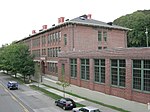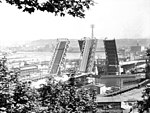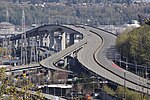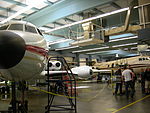KBLE
KBLE (1050 AM) is a radio station broadcasting a religious radio format in Seattle, Washington, United States. It is owned by Sacred Heart Radio and is the key station in a regional network broadcasting Catholic radio programming in much of Washington state as well as Kodiak, Alaska. Sacred Heart Radio maintains studios and offices in Kirkland, while KBLE is broadcast from a transmitter site in southwest Seattle. In part of the coverage area, primarily encompassing Seattle's northern suburbs, KBLE is broadcast on FM translator K262CX (100.3 MHz). KBLE has been on the air since 1948. It was established in Kirkland but moved to Seattle in 1963, the same year it adopted its present call sign and daytime power of 5,000 watts. For almost all of its history, the station has been associated primarily with religious broadcasting,
Excerpt from the Wikipedia article KBLE (License: CC BY-SA 3.0, Authors).KBLE
21st Avenue Southwest, Seattle Delridge
Geographical coordinates (GPS) Address Nearby Places Show on map
Geographical coordinates (GPS)
| Latitude | Longitude |
|---|---|
| N 47.561388888889 ° | E -122.35944444444 ° |
Address
21st Avenue Southwest 4571
98106 Seattle, Delridge
Washington, United States
Open on Google Maps








